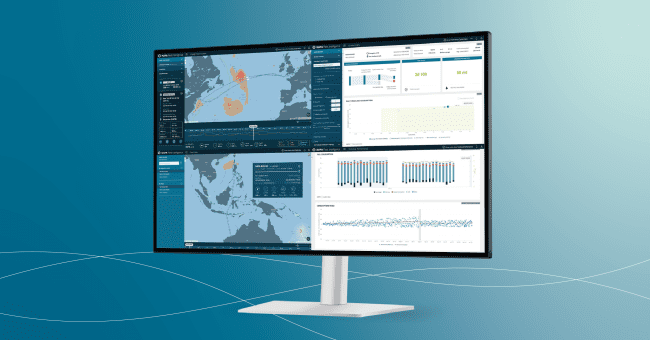The role of data in harnessing the power of the wind
Global markets react to consumer demand, and clean technology is no exception. The IMO’s impending 2050 and 2030 decarbonization targets, and further global environmental goals, have led to increasing demand over the last decade for economically viable, green technologies. Wind assisted propulsion technologies, which decrease fuel consumption by using sails or similar wind capture devices, are becoming increasingly popular and are among the technologies establishing a new frontier for shipping.
The age of wind-assisted propulsion
The new generation of wind propulsion is coming of age, with 2020 seeing major milestones despite a challenging year. For example, Cargill and BAR Technologies signed an agreement to deliver a new wind sail solution for commercial ships, and Norsepower and Bergen-based ship operator, Sea-Cargo, announced plans to install Rotor Sails onboard SC Connector, a RORO cargo vessel. Noteworthy here is that these will be the world’s first tilting Rotor Sails, which is fundamental in ensuring wind propulsion is even more accessible to ship owners and operators.
Likewise, the last few years will be remembered for wind-assisted propulsion technologies, with the idea of reviving the ‘age of sail’ sparking interest in the broader media and capturing the imaginations of those outside of the shipping industry. Most notably, Maersk confirmed the viability of new wind propulsion solutions by announcing an 8.2% reduction in fuel consumption (equivalent to 1,400 tonnes of CO2), stemming from a 12-month trial of rotor sails onboard the Maersk Pelican. The study was widely heralded as a breakthrough for the technology and the wider industry.
NAPA’s expertise in vessel modeling and optimization, as well as weather routing and performance analysis, has been valuable to the development of wind-assisted shipping. Over the years, we have collaborated with those leading the industry to optimize and validate fuel savings potential.
Will wind-assisted propulsion blow the maritime industry away?
For example, we partnered with C-Job Naval Architects to conduct vital research exploring the applications of wind-assisted propulsion and the consequent carbon reduction benefits. Through our joint research, we confirmed the potential of rotor sails, which can save up to 20% of fuel on deep-sea routes, compared with 5% recorded in the North and Baltic seas. The benefits of aligning a vessel’s route with prevailing wind patterns is an untapped potential, which ship operations can start to take benefit of by using the NAPA Voyage Optimization software. Read the full article in Ship Technology Global magazine.
Optimizing yesterday’s trade winds to achieve emissions reductions
We also continue to develop our software to ensure it is maximizing the benefits of wind propulsion for ship owners and operators. This is complex and needs to consider a range of factors, such as weather routing, vessel operations, and engine profile. We understand the integral role of data in ensuring wind propulsion is useful. In a market like shipping, where margins are tight, it’s essential to validate wind propulsion technology and advise owners on how and where it can add value. NAPA’s research also aims to optimize ship designs for Flettner rotors, particularly newbuildings, to further maximize fuel savings and reduce emissions. Read the full article in Ship Technology Global magazine
2020 and beyond
With climate change increasingly being acknowledged as a priority, sustainability is at the forefront of business decisions and viewed as a critical element in ship operations. Also, efficiency retrofits and upgrades are essential in keeping assets profitable in the long term. Likewise, voyage optimization and the application of big data are recognized as valuable in validating the ROI of newer technologies and enhancing performance. Therefore, we expect our role as collaborators: Validating and optimizing new, green technologies, such as wind-assisted propulsion. This collaboration is integral in enabling the low carbon fleet of the future.


